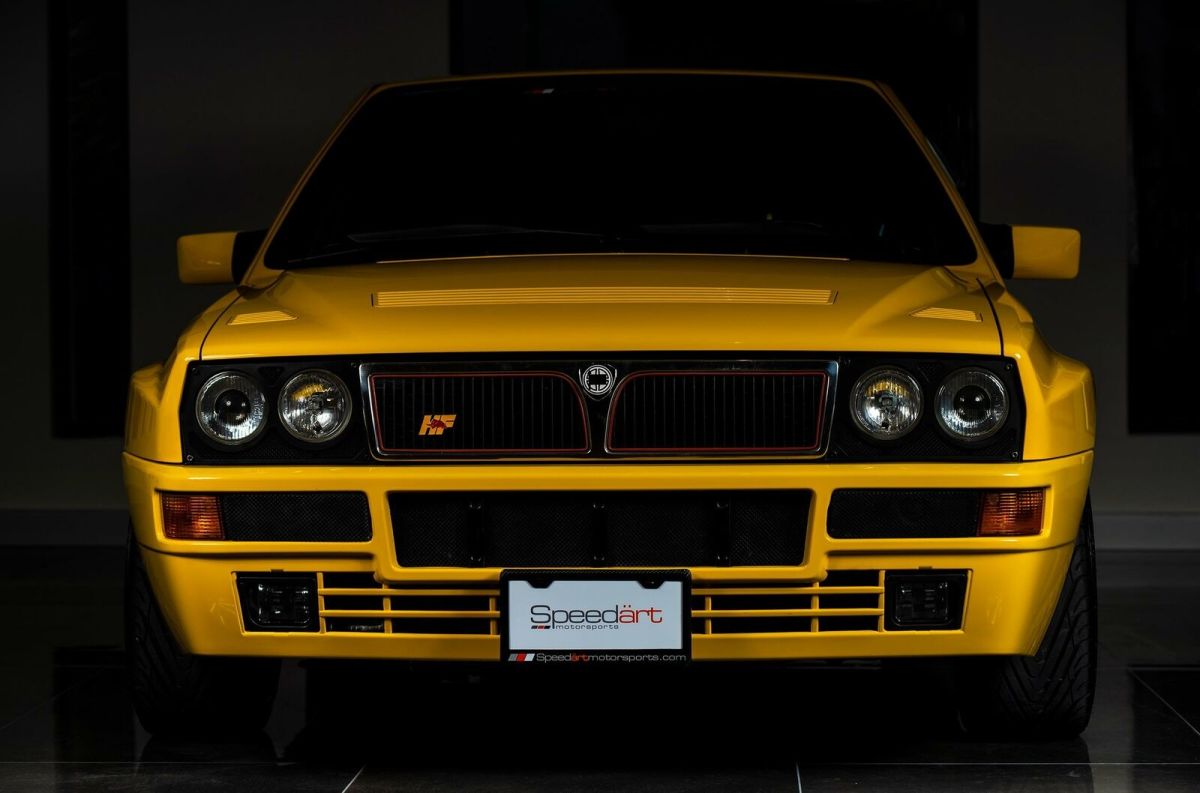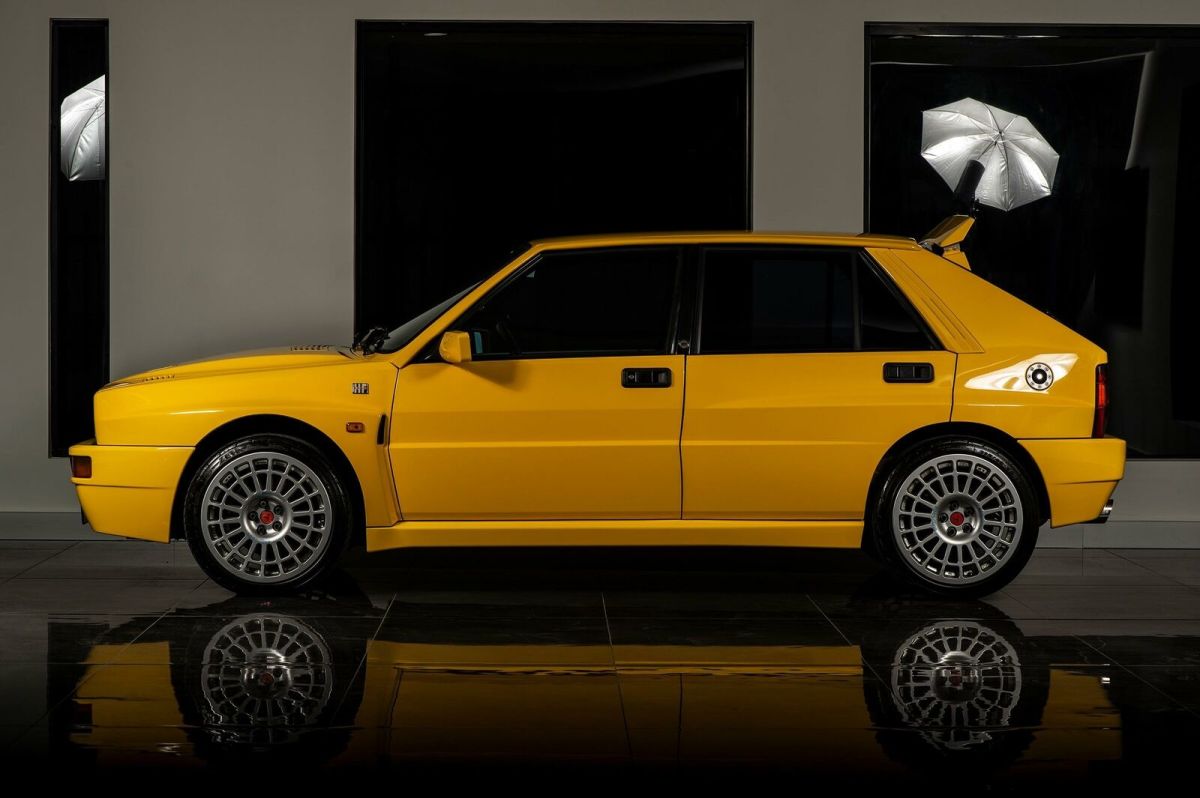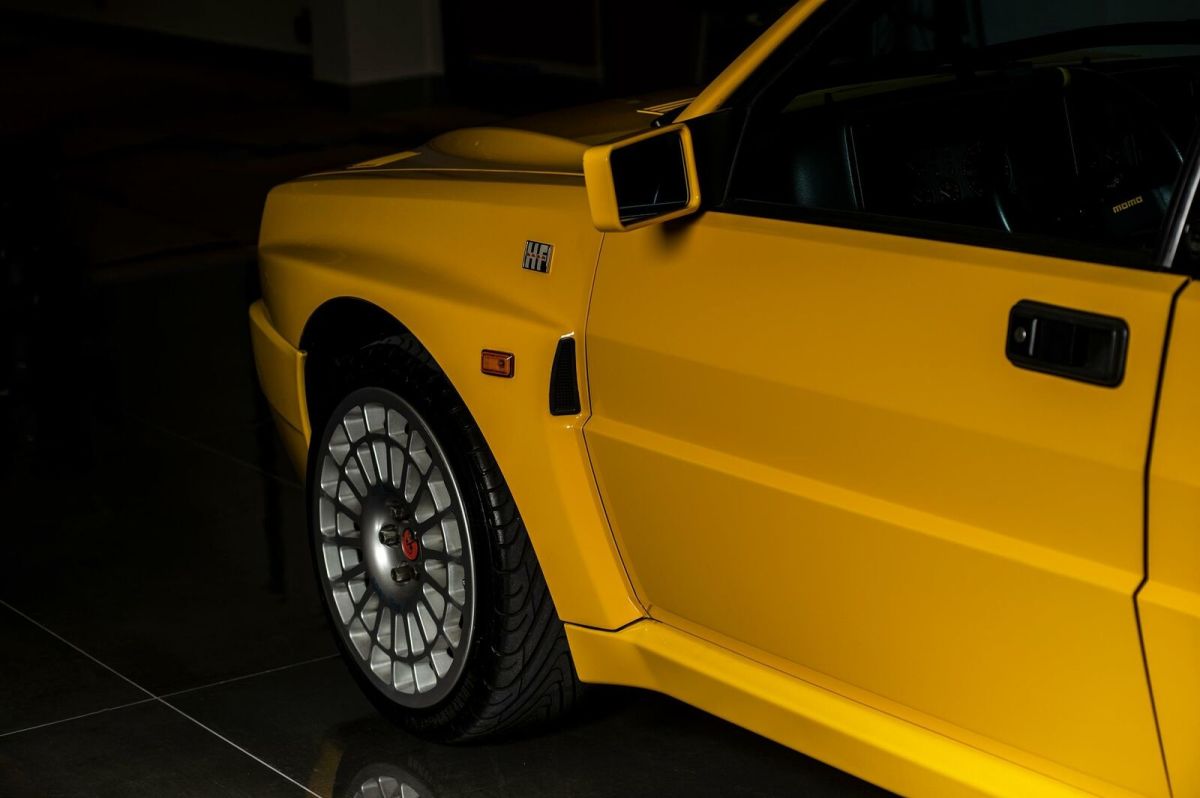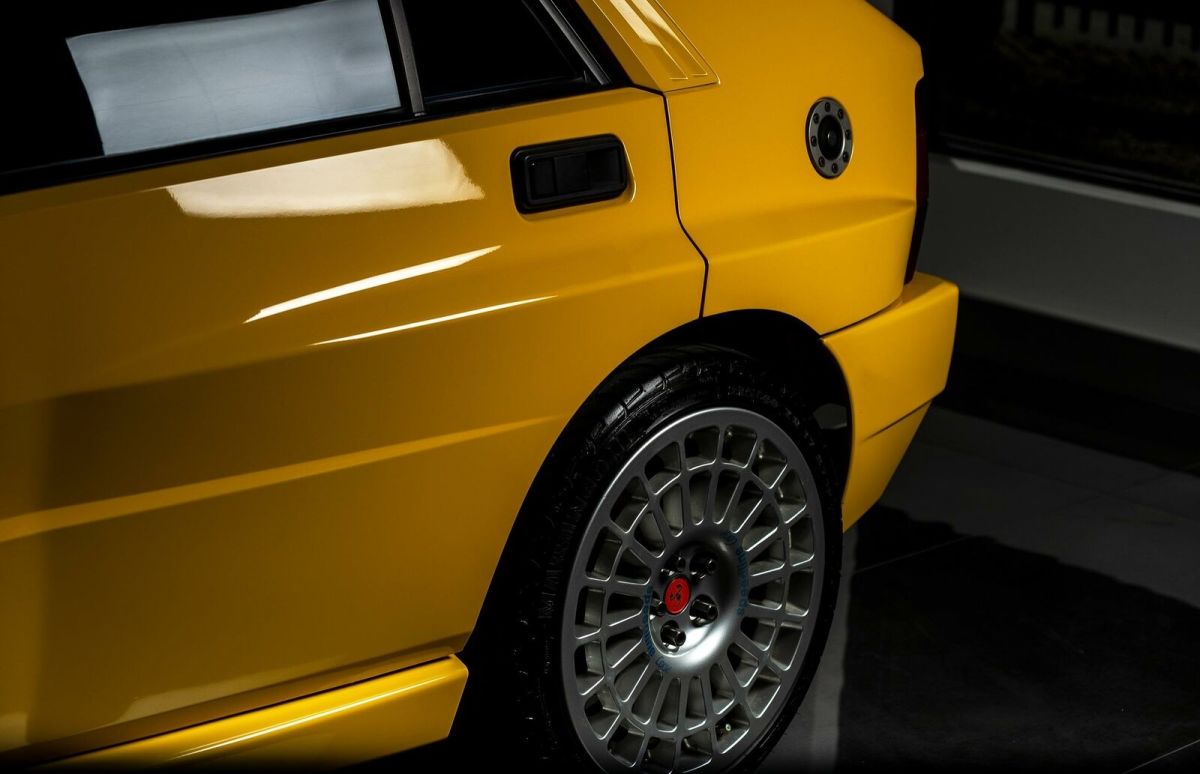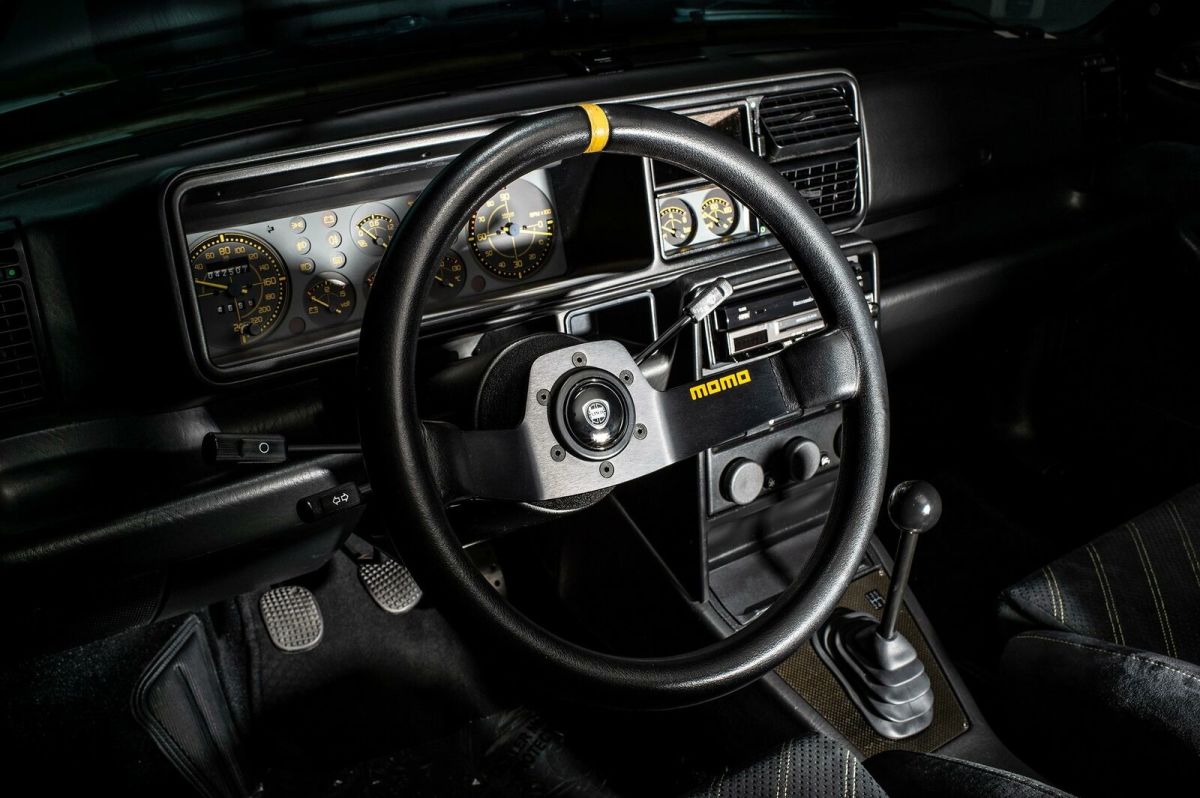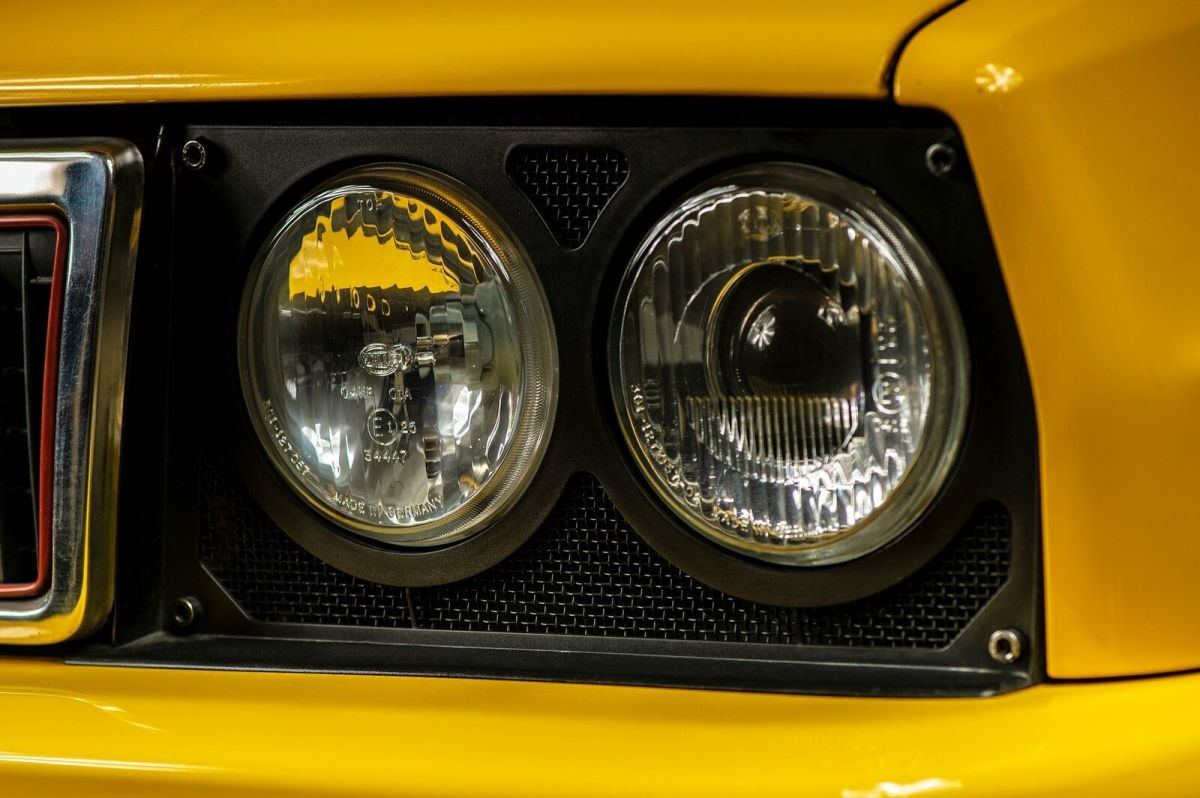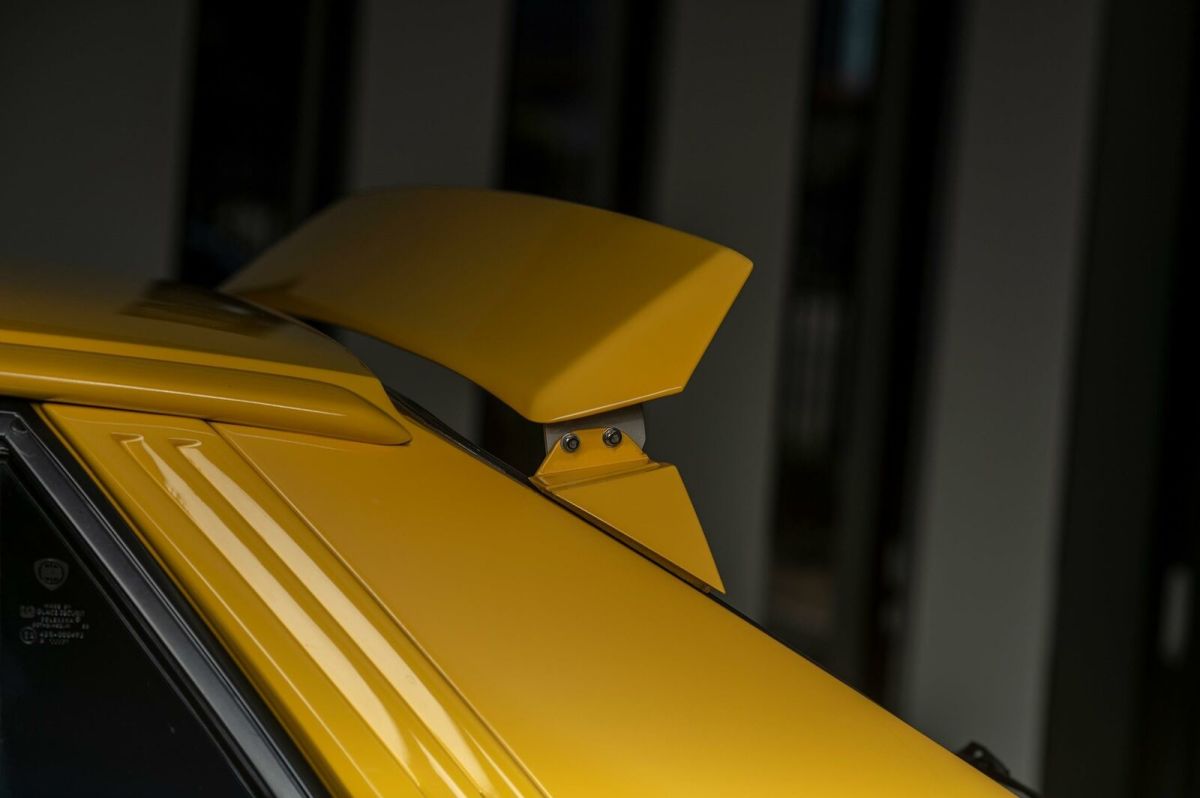1994 Lancia Delta HF Integrale Evo II with 26482 Miles
Technical specifications of Lancia Delta HF Integrale Evo II 1994
| Price: | US $175,000.00 |
|---|---|
| Condition: | Used |
| Item location: | Miami, Florida, United States |
| Make: | Lancia |
| Model: | Delta HF Integrale Evo II |
| Type: | -- |
| Year: | 1994 |
| Mileage: | 26482 |
| VIN: | 44444444444444444 |
| Color: | Giallo Ginestra |
| Engine size: | 2.0 Litre 16 valve Lampre |
| Power options: | -- |
| Fuel: | Gasoline |
| Transmission: | Manual |
| Drive type: | -- |
| Interior color: | Black |
| Options: | -- |
| Vehicle Title: | Clear |
| You are interested? | Contact the seller! |
Description
Chassis No: ZLA831AB000584620Odometer: 26,482 Miles (42,620 Kms)
Engine: 2.0 Litre 16 valve Lampredi Twin-Cam Turbocharged
Transmission: 5-Speed Manual
Performance: 215 bhp @ 5,750 rpm / 227 lb-ft - 0-60 mph 5.7 sec / 137 mph
Exterior: Giallo Ginestra
Interior: Black Alcantara with Yellow Contrast Stitching
“The most prepared company for the transition from Group B to Group A racing was Lancia. Their determination to stay on top of the field can be seen not only in the evolution of the Delta race car, but the road car as wellâ€.
From 1987 to 1992, Lancia consecutively won the Group A manufacturers championship, a record which holds to this day. With these results, Lancia have made the Integrale one of the most successful rally cars ever – a legendary car of our time.
All cars after 1989 have a 16 valve head, larger fuel injectors and a slightly revised compressor. Specifically, the turbine is smaller on the turbocharger, but the waste gate is modified to provide a larger boost. These 16V examples provide 200 bhp, fifteen more hp than the eight valve design.
Since, no modifications were permitted to the body of the car Group A car, the Integrale features the same body as used on the rally car. It combines Giorgio Guigaro’s five door layout with purposeful modifications including extended wheel arches, and modified bumpers and a 1.2 inch power bulge on the hood.
When compared to the standard Delta chassis, the Integrale features larger brakes, and an updated suspension including new front springs, dampers struts. What remains identical is the proven drive train which helped the Delta HF 4WD dominate Group A rally. The secret to the Delta’s sporting performance is its permanent four wheel drive system. It uses a Ferguson layout, having three differentials. At The rear is Torsen, or torque sensing, differential which mechanically splits the power in a linear fashion. The Torsen differential delivers instantaneous lock upon high loads and not during braking like viscous couplers. Such a differential is very expensive, any seldom seen on any 4WD production cars.
At the center of the 4WD system is a viscous coupling differential which divides the torque to the front or rear wheels. Under normal conditions, 53 percent of the power is sent to the rear wheels.
Despite such a complex drive train, the engineers at Lancia still opted for optional ABS on the Integrale. They revised Bosch’s six-sensor system by adding two additional sensors to measure longitudinal and transverse acceleration. Only under severe yaw does the ABS system intervene.
As Lancia was and still is owned by Fiat, it should be no surprise the Integrale uses a two liter Fiat engine as designed by Aurelio Lampredi. Updated in almost every area, the Integrale’s engine is an evolution of one found in the early Delta HF Turbo.
In 1991, Lancia issued an updated version of the Integrale 16V called the Evoluzione. Primary motivation for the Evoluzione came from Rally, where Abarth run Integrales needed modifications that had to be homologated. What really sets the Evoluzione apart from earlier cars was its body. Both the front and rear track were increased, as were the wheel arches, to comply with Rally Regulations stating that the tires could not extend beyond the body. A rear spoiler was also added to the top of the tailgate to improve airflow.
Under the skin, many changes were introduced to the brakes and suspension to increase endurance and stress tolerance. Specifically, the brake calipers were fixed and featured twin pistons instead of the single piston, floating calipers used on the earlier models. Other less significant changes included, smaller more powerful elliptical headlights, colored instrumentation, a front aluminum strut brace, a larger steering box and a remapped engine that produced 210 bhp.
The final version of the Delta series was the Evoluzione II made in honor of the six consecutive victories achieved with the Delta. With Alcantara-trimmed Recaro seats and additional sound deadening, additional creature comforts highlight the Evoluzione II. Basically the rest of the car is identical to the Evoluzione except for the larger wheels, remapped engine Mototronics rated at 215bhp and a three-way exhaust catalyst.
In the final years of production a handful of limited series runs became available with the most notables to be Martini 5&6, Club Italia, Edizione Finale, Dealers Collection, Verde York and Giallo Ginestra Speedart Motorsports is very proud to offer this genuine matching numbers Integrale Evo 2 in its final year with 42,620 kms (26k Miles) believed to be one of the lowest usage specimens in the world market today and arguably the most desirable. This limited edition example looks appropriately outrageous in bright yellow, all original paint and it is reportedly one of 220 built in what Lancia called ‘Giallo Ginestra’.
The motorcar was imported to United States from Japan under the 25 year exemption, accompanied by all import papers as well as owner’s manuals, spare keys and all pertinent documentation. After passing all inspections and compliance with the Department of Motorvehicles a Florida Certificate of Title was issued making the automobile eligible to be registered for road use in North America in accordance with its DOT and EPA documentation.
Upon arrival Speedart Motorsports performed a thorough service and complete systems check including fluids, tires, brakes, battery and a preventive fuel pump replacement. In order to compensate for a weak A/C a complete service was due including an all new OEM compressor sourced in Europe.
The car is incident-free and presented in unmodified stock form in its original factory paint, with the only additions of 17? super rare Speedline Corsa alloy wheels, period correct Momo Rally 350mm steering wheel and an Over Racing Projects exhaust.
The overall spectacular condition of this Integrale attests to a fastidious ownership care while all systems work flawlessly as intended by the manufacturer including the performance figures associated with the thoroughbred 2.0 Litre 16 valve Lampredi twincam turbocharged motor.
We invite you to see up close and personal this investment grade motorcar while recapturing the heroic moments of rally’s golden age and explore the possibility of owning one of the fastest appreciating homologation saloons.
Disclaimer
Whilst Speedart Motorsports, LLC. (“Weâ€) make a sincere effort to contain information that is accurate and complete, we are aware that errors and omissions may occur. We are not able therefore, to guarantee the accuracy of that information and we do not accept liability for loss or damage arising from misleading information or for any reliance on which you may place on the information contained in this website. We highly recommend that you examine the vehicle to check the accuracy of the information supplied. If you have any queries with regard to any information on our website, please contact us at . This disclaimer does not affect your statutory rights.
